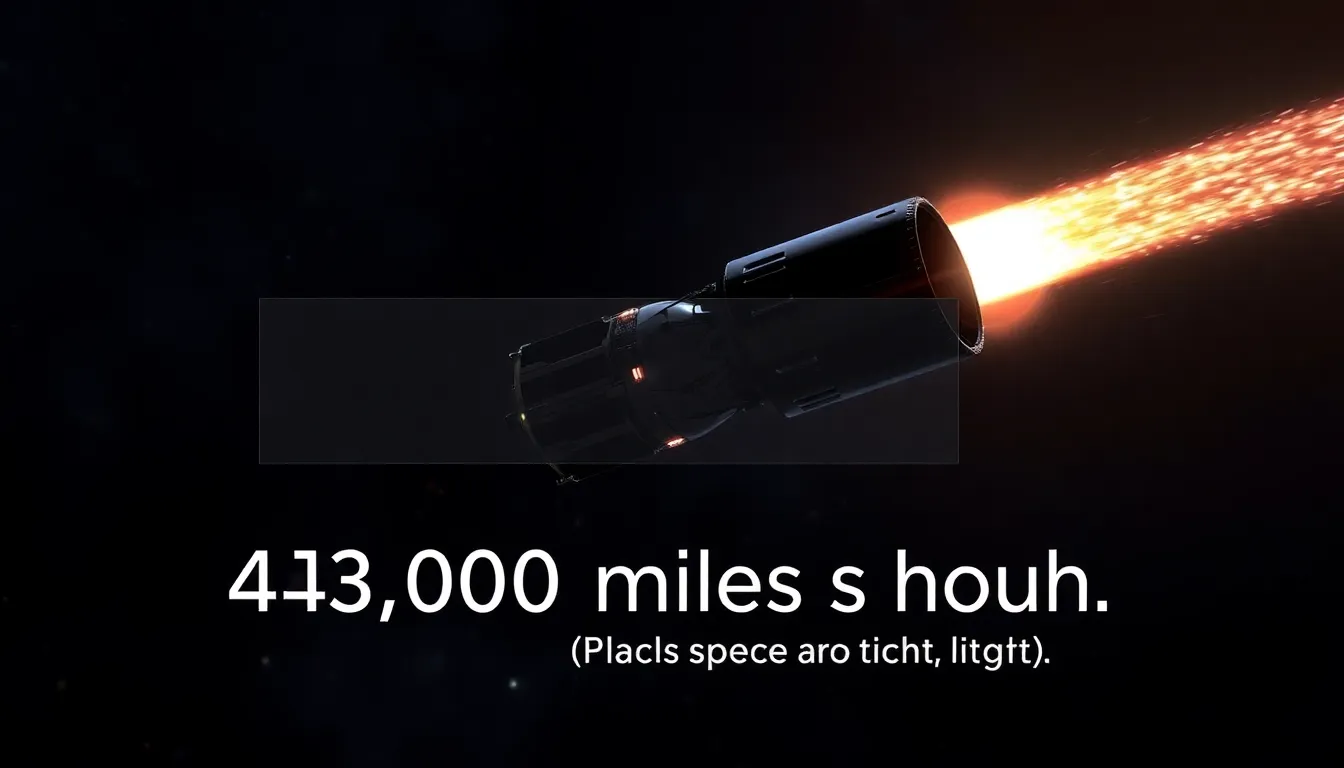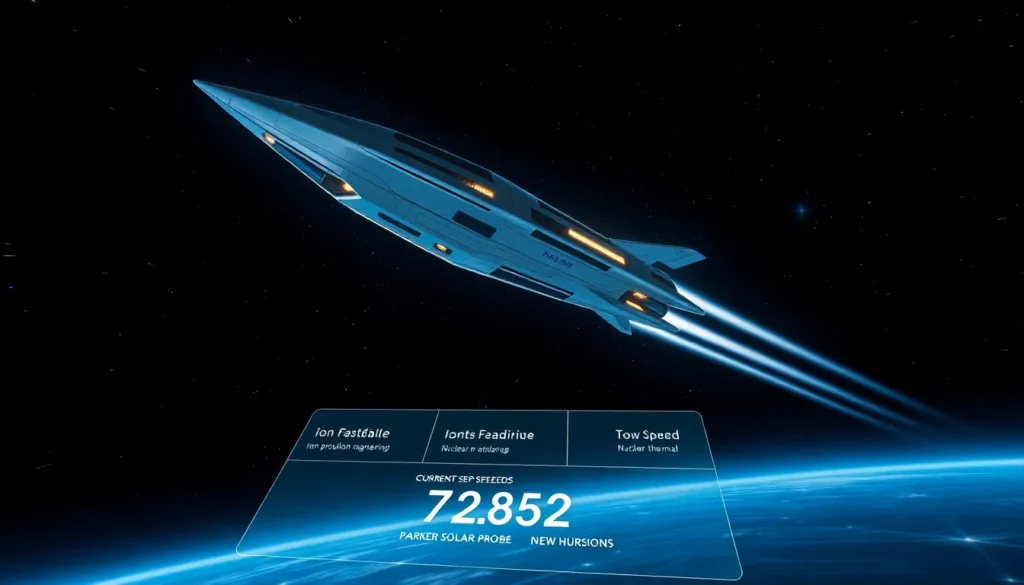Table of Contents
ToggleImagine zipping through the cosmos, faster than you can say “light-speed.” But before you grab your space suit, let’s take a moment to assess just how speedy our current spacecraft really are. Spoiler alert: it’s not exactly a joyride through a galactic amusement park. In this text, we’ll unpack the science behind space travel speeds, examine speed records in exploration, and investigate into the technological constraints that make space travel more snail-paced than rocket-like, at least for now. Get ready to explore the final frontier like never before.
Understanding Space Travel Speeds

When considering how fast we can travel in space, it’s crucial to grasp the baseline speeds we deal with. Speeds often get compared to the speed of light, which is about 186,282 miles per second. But, our technology isn’t even close. The fastest man-made object, the Parker Solar Probe, soars through space at a blistering speed of roughly 430,000 miles per hour. It’s like going from zero to sixty in the blink of an eye, except, you know, it takes seven years to reach that speed.
To put this in perspective, the Voyager spacecraft, which launched in 1977 to study the outer solar system, travels at speeds around 38,000 miles per hour. That might sound impressive, but it’s only 0.000056 times the speed of light. Clearly, there’s a disparity between what we can achieve and cosmic speeds, so what’s keeping us grounded?
Current Speed Records in Space Exploration
As mentioned earlier, the Parker Solar Probe holds the record for the fastest speed ever achieved by a human-made object. Launched in 2018, its mission is to study the Sun’s outer corona, and it will eventually reach that remarkable peak speed. Voyagers 1 and 2, while much slower than that probe, are still notable. Voyager 1, for instance, is not just a spacecraft: it is humanity’s furthest emissary, currently over 14 billion miles away from Earth and cruising at a respectable 38,000 miles per hour.
What about crewed spacecraft? Well, the Apollo missions took astronauts to the Moon at about 24,000 miles per hour. Not exactly intergalactic speeds, but impressive for a trip to the lunar surface. While these figures may seem daunting, the average speed of a commercial airliner is around 500 miles per hour. It’s a sobering reminder that flying through space is an entirely different ball game.
Technological Limitations Affecting Speed
Even though these records, technological constraints heavily dictate space travel speeds. Currently, propulsion systems rely on chemical rockets. They offer a decent thrust but lack the efficiency needed for higher speeds. Simply put, the fuel needed for faster speeds translates into massive weight and cost.
Besides, the vast distances in space make acceleration and deceleration time-consuming. Even if a spacecraft could theoretically achieve much higher speeds, slowing down poses a whole new set of challenges. Consider gravitational pulls, atmospheric considerations, and even the basic physics of inertia. It’s not just a sprint: it’s a marathon with constant outside pressures working against momentum.
Then, of course, there’s the concern of human safety and technological reliability. Faster speeds would increase the risk of catastrophic failures, as the margin for error shrinks dramatically. You can agree the stakes are pretty high when you’re barreling through space at lightning speeds.
Future Technologies That Could Increase Speed
So, what’s on the horizon to speed things up? Scientists and engineers are exploring various innovative technologies to break the speed barrier. One popular concept is ion propulsion, which uses electric fields to accelerate ions to create thrust. With high efficiency and the potential to operate for long periods, ion drives drastically expand the possibilities for deep-space travel.
Another intriguing avenue is nuclear thermal propulsion, which utilizes nuclear reactions to heat propellant. This method could vastly increase speed without the excessive fuel requirements of chemical rockets. There’s also research into solar sails that leverage light pressure from stars for propulsion.
And who could forget the concept of warp drives? While firmly within the realm of theoretical physics for now, the idea of bending space-time to travel faster than light has captivated minds for decades. Whether you’re a skeptic or a dreamer, these technologies could redefine how we perceive speed in the cosmos.
Practical Implications of Speed in Space Travel
The implications of increased speed in space travel extend far beyond just bragging rights. Imagine how much faster we could reach Mars, complete manned missions to Jupiter’s moons, or even explore the asteroid belt. Faster travel means shorter missions and increased opportunities for scientific discovery. With swift transit times, humans could establish permanent settlements on other celestial bodies or set the stage for interplanetary tourism.
But, speed isn’t the only factor to consider: energy efficiency, the health implications of long-duration fast travel on astronauts, and the impact on spacecraft design are all critical components of the equation. Can we keep up with our speeding spacecraft? Will humanity’s instincts for adventure allow us to face the risks of faster, further space travel? These questions lead us to reevaluate not only our technology but our entire approach to exploring the universe.




